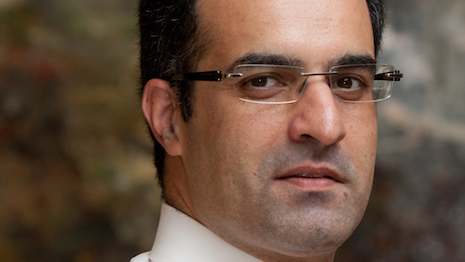By Lior Arussy
Almost two-thirds of millennials prefer to spend income on experiences rather than goods and want to share those experiences on social media.
The trend towards experiences over things is concerning for many brands, but it could be an opportunity if marketers plan correctly.
Buying a Swedish mattress, a high-end bag or sustainably sourced shoes is, at some level, an experience. Many retailers are focused on sleek digital applications, Web sites and ad campaigns, yet, research shows that consumers still care about the in-store experience, and are craving a more human connection to complement the efficiency of online shopping.
Lessons from the business
In my generation, luxury brands represented the ultimate shopping experience.
Test-driving a Mercedes, buying a Swiss watch, these were once-in-a-lifetime experiences that many people aspired to achieve. More recently, companies from Warby Parker to Anthropologie get more headlines about their customer experiences than many luxury brands.
I know why. We did a large mystery shopping study that included more than 50 retail stores, and found that experiences at luxury stores are almost universally dismal.
The results were stark:
- Most customers were clearly profiled and dismissed if they were not well dressed
- The conversation immediately went to budget, with lower-budget shoppers receiving far worse attention
- Little time if any was taken to talk about what the purchase was for or to tell the story of the brand
- While many stores had espresso machines, bottled water and other "experience enhancers," they were rarely offered
In almost every store, I felt a lot like actress Julia Roberts when she first visits a fancy clothing boutique in “Pretty Woman” – unworthy.
When service is poor, it becomes a self-fulfilling prophecy for the company. Retail stores lose sales, while digital grows.
All retailers are facing extreme competition from companies such as Amazon and Rent the Runway. The one thing that many brands have to differentiate themselves is their in-store experience.
Many companies are experimenting with adding experiences to their store, but they are not all created equal.
Eyeglasses retailer Warby Parker is opening new stores because it has cracked the “experience code,” which marries excellent digital retail with valuable in-store experiences.
If your company ticked any of the boxes in the list above, consider making these changes.
Embrace the use of social media in the store. Apps to help people try on goods and see themselves in them, photo booths that post directly to Instagram, free selfie sticks.
These are all options that demonstrate a luxury brand's appreciation for the role social media plays in the lives of their customers.
The stores we visited did nothing to encourage picture-taking and sharing.
Clothing brand Ted Baker does just that, encouraging selfies in the store to drive social buzz, sure, but also to enhance the shopping experience.
Bring the digital experience into the store. For many luxury brands, it is easier and more controlled to roll out digital campaigns, such as Burberry's “Art of the Trench” or Tiffany's revival of Holly Golightly's “Breakfast at Tiffany's.”
These are lovely advertisements, but they mean nothing if an actual Breakfast at Tiffany’s feels more like a slap in the face.
This is not about virtual reality or in-store information kiosks, although those may be fine. This is about keeping the magic alive. The story of the Swiss watch, the romance of the gold necklace.
Only the salesperson can maintain the feeling someone has about an exciting purchase. Even something as simple as looking up a customer’s search history so you know what she has already browsed online can make a more personal connection.
Encourage people to come together, profitably. People rate shared experiences higher, yet many luxury store brands did little encourage a jovial chatty atmosphere, sometimes even moving our mystery shoppers into a separate room for cheaper products.
Some innovative brands such as Supreme create “events” for people to experience together by releasing new items at a specific time and also encourage sales, not just loitering.
Get the staff involved. Our research shows that many luxury employees feel resentment toward consumers who can afford such goods, and this colors their behavior when serving customers.
There are so many examples of barriers that cause employees to be dismissive of customers, from big issues including distrusting company leadership to small things such as having to spend too much time in the stock room. Those who recognize this and find ways for employees to genuinely connect with consumers and enjoy their jobs do fare much better.
THE PURPOSE of changing an in-store experience is to support commerce on any channel with a good experience in the store.
Luxury stores should be learning from the new crop of companies who make purchasing a product a memorable experience.
Lior Arussy is CEO of Strativity, Hackensack, NJ. Reach him at [email protected].
{"ct":"owlQmyawBuYDAPb\/PPiJqBck6Tr1+ZJx1RnXtcu+L+UKbewHo6GKmMb7vibpXHL\/7zNlh+gnytYFPc95CGTIHzOq5AxzllenQVdSObpVhp2EFqhVhowFqBGv0cBmT\/D6QamqzFJKMPLtfKYORou56rI2a5lqLq5ViWr6lRZfdOtfoDjvOIyN0N9w62zKk5EyKvRcqM0hYtxhJk55f0xdD\/NyGRYESWNWccaWx+aQ3JWa1dLICvJ\/PyPk5ux9ifzfzW6zE\/guLsFEEF0E+iCJ1pgQt3sy9\/jmIcmAmudJAoyT6b9NMZbdcjdI3Ya79TXa\/3gE8g0FpCCC4srhrlfdWsfcnueXsoh2mwV7yBNC3XNrvCYPhy+n++jPwRp8ZXPlxg4yR82vVsvxKnbI9QlNocqItybK0PwYpHoqtMMXMkFvnHnf2VWOhQn+763XumrvwAJ57NWekpPHwsY5pltjt3iH5IVoMN7T1+ukYJyfCc1wZDPizxPX0ivk0euGqgTXyE0Q0GCI0dlaS1w4DwrplCPvlP8zqm9d+pwalhnwoo5g3VfjI28WhO\/RLLMOvD1HMJTjrGvUajjY5iSljyK6gf1Fp3Hohtw+1PCH+AHTVDGOqubcqRkI2yzJvO7ltaj22K4AvD7qBhi1D4buisYFdBXqN5HJE3g+IssivcH0CxdKgCtxKvHFFOH775cNmLlI1RExGGBUOFijtFD51Gs9ChlqydlABIiy98ueth\/hn12y4tA0doshAjyAQVjEwJmDH9VnkX8dCnARSFcYBhi\/IIZKJkzhcCp+HVU9DmkdcA2RwuI7IOsKBxYUjkIW9anc798rP2oX7eBL0s58E5BO5qK88ZxdCr3GyxwL7LTY3qfDVaqFtUOKFdCdcuW4e3nYFD4FaHFToSti72jy6U2LXnPZaV5+issjP2vtghxIOU3\/agD9OWMY2kpMqOswKaYR9xsm9u0jwX3oZGED4Oi5iUj\/6Z+TwFlbel9ffLCOcK2ZTknQP3fEIAu3gShVPm+fNTnSSn21IzCHsHO9\/jWZLb2JU9wEpCjnddueaKMryLovX2aIDFU8Y8XlKAbom38+6Iok49JNhbNoUAezRoIX9DB6fv3pYt4RRHSduRyZAlYDf+0r6BnOd1BGLiWQpKIRGxP4CHnzDkrk14QvasOcdZ8ckCqyr7cmbQbgsbIu\/qru7RJgitg9Ue36yA7y4GxUQfujrwwA3kdJor5yD7gZ1ZI3bMuw5QeATwJxN59LkNqNJJcWOZkd4qtGP\/mkHhyeE\/fuTv9psl3Lzksturlq6HHrj+1nkuTAGagHaJ3gfYJRZjrMkXRTlwZI6cjwxNJSLRu20ntChgurbNLThcuirM6slKQPrQ0yI5yVuYfcnSRFlrojUxSTN+HxorgdnsWE1rIahoPQ4Hkis7pTJhLLIE3k88axNfTaT\/rQw1oQBwh1ZW0zvHansK0lSU0KSv6351IPk6k2Kjza\/KUQ+UCasteb7ahMNfr9d38pFHA6RWpynHTzi4zB\/haF+ljwlLxllOkPnEc0N3b3UygCYu28HTzre8YnYYpwfeSm6U603sLWoaKx41brb0cuyovTcbVMA+rc+QzMoiPx2biJ0C4aE0JRxEwxeFuz4sf2A76aX8viqML6QetUmn\/ZVHHu22jMoBppeyRG46qFSC0Q821GAmCbFQpfD+yJv7COp9HmgXMjwj5G8IiOHMw6EblVOZONjAmz1lBRklaAELBAZv6+w89qhaVNmWHeiOmXabaZd7AWwvawXqmYaZPTOycQwAS8+VrvOCkoFx\/ujXahQXYCxvatEswSVsUIBM9c\/sA6+o6gq65m7Gbd9Rx8rMuBLIkgPvxUUTDpt22gP4oxGjQZR2heO94HCRB0K6uy\/OU1lM\/O3efH0xJML8peoupywGlkbs1hkEernvNe2BJB\/m8N1cGip8noEbzOhD+jOg+eCKymfosomcbe0fBtBAT\/WeAvoeold7nMtdPa6zQaMLgTyXere8R3L49Wp3YWIyG323PRR2pj9Be3f+H2FHdKCzLcwcrEdpjz3zuTXkimsydti3Sqowaihm9GgoCiHc1PtTeoJxazRbTeRF1MciLb1FDSW2ffv1IMjQlAdSP9rWRFwqx\/Qr9jE9l10O4xnVuaYJCs6XUKoSrYREO26IPVkT1zr0enC+7tdOr+\/mQO2Non4YfqpHkpK9w7Y0mj6KwlB9oD2GbasrBhNjp\/9Sg9JeZkj+AFSsS5HxQK7Ja6oBlLgUbU2joEPkbGgHVwOVCa2G1flx5uPDgbuhqpe+2QzsYtt8qhLdn7Y2wUJqw4y6ilnSVY8jKtSykFUxELU4S0NNGjqn52fKrOYGNXHY1s9NkfalXVBNW6t7zxR7WGlFux04GMTWqcEmF0OOGPkgTwjH1DKFyA9jBBwEiiTKar8j65x0Lm4PV+fhgdEELK\/WXIfZw5HhyTymccWYXOqS+b7P3xgIZAdiQB\/xrl3e\/MSnYbe19ecz3OK+qGJR8jqpcDcuEHeqIFCsKQRqtmSxWsQV8aBNwJk61PhxoZl6hZGs8RtAfmuzrd8N63XOMnsKgEPlmyp5pGT1neBf+H7UoTuuaZ3wgtfzP84HPcxTTo6AqwnzkUqruCjJ3VfKExMJR0DaXzubZ0GvnyyLHPZEnR8TumZlUmBQ8xyYLzXXAsyZtXvxToxW1f5KEk6s+PlDoFWMaO1MA7WqLCuW7p\/Ou8q3J1LGCdsuxvfWFHLl6TBUugMCYfWtL6ldcNHme8TGyfPvfgeux2YtbKzQ7+YF6M6PvSTx+VHT9MtkfUAPdyoSMeJNTCPLe6Vm4zM51pCVCfNXpu7g+honRR3sLLzGnPsSi3StntKiJc5bOIr4bIqMJ9bFKxMvrMWY9N3uWz0MW02uVZr+82uznAfkxMkilGHa41oOkPOjNCt\/6akw8iIe5WDxMV76EJzAGTdTSC3ijF1Y65BaPa\/d\/SVO6ktRRI30IYL261pmWHJdTdIYNVP1fGJqC3Frzn5KDFc5xAKaxItLzlA4q6\/Rk6x8LzWEZdS0wVmwBCUifeFshN24vNeLPd0U2\/anqDey+XhK9OD53i5UpwTALw48nppOiYAM8vcG+OcPdIBmSosjWK+bSGUGE4eDoiAbHtrgwHXYhV3fB2dO8oBtc2lT8JlZVHlOiuSSO10vFl\/99XcwvW6KB0zqkJhRylv7m46B4+CGsWWywc1HKhLJwJmHxIAPblYQbus577AEEOPmLG1SqizOYTwctOSV0HRw2\/C0B\/E6qiP2YVuvG1ocClXOoDEfQsNCVNzxhAw2K0R2agZ0DtL82LdT\/VAfFaCmfAKUdIr9Hue2X1iKBK\/NTVCIF6zZLmHQoIkuCoswnBhEH05eyD3gE98zw9dm6AbfJAxsoJOkZRMoCzFJnxgbKXfYtXjcFr4B5YK+UV3jnThMwg8lUR9Y15oCNzcraA\/d6efaG4bfQu0kQ+lMrU\/DQkoEw\/SotW5yc3F22+8TkL+Ac9fXPYaJpGdwjvWtrDxTybkI224U6gUih7O7KeheG9tag8nboDoHKsMcVSjkUjVRVYlqvZeTx1WkJCp\/wU2qy3ofufYoKqjjYAeydRCnVqqmY9oPZLSJNhcbBBGdl3h5I8nRC\/xiFwsqUBUPqTROpuprMDH3oxSFatrbPxDx0Ujr5jo74zwNwhlTTpJ\/cU4g+spoVfJgtpiuZ+ylLPlUhTWXRKz6BSwkx5QJe0wf3Wt3sqOhHYtRetsaSy23gLQVS5mEPdzYf7SvFjDNwayPS4h8urCmNg2obLRP1Svh\/peHwkol10o8M5g8XvwBsZ9BouGIJu1SdEaR9aL4aXknOhyN1Sfx4U2lXCT269JWWlHPsMSHFCkvNtFJQMjoiz5NPuQ6tHTp6ICEQuF564b6ej3d9yet7b2uh0fVaEsz3MLKaDwb4yueHKhGuKPRWaHzr2YH3LNYFb8iR3G0C4xlFSuBhFwE5Tqkv5gQ14VmerBbxAIy4RidUhORtuk5q03GZO2lOoaQuQvGe7CrBIPjkF7gksXsAFT\/eUMroL1txHFBg\/7m407TK8vWQlgfABt6J9CnsWhFHVENpVxbivR0\/2i4wmRUa70GjQvjY8Z7wfGEAtFEiKNCNl\/1OhPHgmz\/hjPtPbeW56MoxIJ2KiRWysWOZ\/9OggbK3oI6UIN3YJTyxPPqO7\/tEez9lxLLWwt93gI4D+rB4sRi8PwIgusiDQLLDxMNqiZMgry0nKm\/zeiJJrvibVa6WFemFYqFBesu9lUSk7rncu\/yq9d4GmCuO8\/elm+jPB5sabEXI\/XkJ66FZK8zpGcn+NBK0B6lbofVvmoHGWdUgwO7GFa1dSoVfXJIYFb5nnbsXLlmZe4quhc7FjHQqZh9hbiP7iiSltF7yHxAiFxYjcRNuyMghcze4EsV7idrryU0l5hztDlJJFQk0mPADxovh74j24hPN9J32K1IbBF8aJXgIUZHSFZh+VHerh49o01bMQ+hWeHQFNiob\/YxQTsmTl4T86WV4Yqs4IGM2NeMnHcQNl8IGF8ZmzadRrMAlhgUb5SNmopHpwPbPo2rRLhNk4iCljFU3r3NTRZGgEC3v+Ew0OgUtfzdBFUBqPbPv4cFidfuTWo0r0LNTyxf01UeKmkquq7HN\/Zyz1+d\/kObIxufGm2sd3FNfE0rDNd3smoQ0jsraNkhG7URWV1k7PRSLlApDrFujbdJ0ktx\/jcT20k0DqjzObbsCY26M+AlWxNYPRfvgTubLHMmtF0ib5h7huerMlFkqJPH0lc7ZaCR04ypck1B5eXLP53QXRKHBbCKTe\/GagMmWMm\/70U06P8bozBwk+IyY30Uzj1LzRvE5dQAdnnyEk+lQy3WrnoyPSXAJQ+KHpTcO3TxsGTZ0h3rDi2BlpCRQG4eUg5SbugVDQd3fl8DQMRSfgRPD7UWQ+y+4rR0RWbbAE108UQw+Pfbue2xu0sEn0TWaeHN3rtXFvOB1IuZTgn0hVuua3CHM8wXYhX\/N3I7CluisSOQrwDx4pVUbcUucWCBpPwnp0cM9emxA+vb2vKLFVjCc6wz612e44HcKAMVHB5xUjUnOOoF73J69vNu0jvydxPQySFD5Ypehk2j6lhHsrEbuX+lKax+vBYzLpjbNMZjHj5UiraGFWexaBBVg28n1r0uNnGHWdJu2A90FbIdvtzaJ6EkmTrXDHPxEHQXs7K4rLXWrpuGu\/Wr0ISUjeiv0CRaWma+Bdwm3egcqnPd\/wjoyY8EVnbF8Ots5pyjJqBM+cqhUqzsEzZc7AeojAwKrj0MVQrZ8XYR\/xCWd6v1LyKg4Zx\/qPkOYCpyBibnGkD\/K6JENtKySbnjvJwSMjWtTKUsL6xomgiEZgxU1c7TmFV2+jU3D\/nJrG912OtUzgaxdQOwdD\/bTzCCvjkeJsedaymD9GcwanY1IOfGP\/AOKl3nt\/JIYphoX9xbgksAIcMH1Jee+pNEgpJDzNOkV+xuHlEUqrM3hgj7ambhu3Jr\/N+vl8C1qR8GHsJQh4wMcrorcEUQr2FEg4vGNfH8Pa\/6m+X9K85Oc4ikKzPCZCTbjRYY3LmkBZ6gvoeCCDocubbPS50QIPRDescFgn\/fS1LAl9WHGOIv1EeY8qajRTE0mEwR7Lj0unDnMSGtGEorhJEPQZM2sh7VswP53q0jrgpAwWPwCQ+L9LftIx21AOTn2nJWopaq7FDmrV1UF\/ZDnqhvg9fj7O4h1Wcfa\/jPJqcsJxv\/QdmemretpWTOzCw02o1hFOX9rM2PvKp9p45rT2eMPzXX550JiI1cwjuvBtYEyKDgeLxiogDXhxB7SL34R3xp0Cmw8vPAAqL1eF2Syknus7Gp8dTUq9KlBZfEJ83CVpAO4I255cSKvniDnPUFL8wykvkVNSi6n7Er4PikOyyRhNNjsj+ZvymBasoCqcdBMd0cu0BO\/WmH48ouIyBoy8XtS6EuyOiyEjjIE+bI4d3IH\/EOb+JPpudUX65v66TNp2P6B0IoUZJehlhCferrd5yX1ZKCLmOMvUgcBUb8mgCILf7wIorKMtwLKlgmycdDLTwPs8WJh5si0NN8w60iz1AX+l8l1Svqcn7SPldQ3VvxKB1i7CVXU6hbAqfn0cPT+nAz2HHRk6a2cvlVoWXsXHaJQi5+Prgr+WaerIF3\/Y7rZal1DPpo00nVuXCwTSDzafslKTLv2ZtQzIiBBcUzYeQvtl37Z1Bfu6qIb89POZjyacppT4na9pN\/o8hbW0lmBzqcoTAGAEQmv4pcerOdSG+\/wiGw3SpSyzO2mSN4N31vkaT3SJcsmPpnO743pNOgr2jojzsRG5AYKCaPHygjxIGd4Mw83uZzqhQ3p1K+9pm+XcetRLwmsxt2djX4Nz5qcHfgQT1n3Cc\/bpNDguA0ZVXm+gCDZShi8yJm4XI15+\/beB7Lpaetyl++zkxZBRECKEchcsA32w\/4NoFsSZnrBtFdC\/msP36pgT\/HNNkLc27k0NYQjytBfZ91D3\/RaWG0JvlHAKzsq4sN4xXkn4mhWzA92Ra0+pO5sWIN3goK5JtDeazzqpykV3Qy3p0Zom9KkrD6U9UAnTuWA0y\/gp9XucMjAXROr92Xk2inIuMTKdWnfgITkhVe\/kdgJKeS7QksJDiOhOeLdW8QzsCum1VprCOB9QYOiuVrofN2U9F25krT4hI6YoPjJBgXNBgd0M4432K40vCvsho+VL3Kso16zMifesXeYgWdWYQ6KCmK9+k\/vf3diqDQsgrcx+AbIjeKRMpEZoTzkT\/7wk5Ob9jZrhzi9zGmbpZnB06FTNOQbysT91iYtQjNxqr\/3XWhw1GzVQGOGPAHVIFTC92IiIjW3nBrIo4OcSHg1MONAMSAbKzV8rEzKHH3U3iiU72EoeAz0uAz7bvYQbzMildiw9pSIexZJUKWFgo7\/ENkfj7h6njspLypJIvupwG2Jc5ag+Ld9e5nVosA67+ZWsxTDPWldoEbv3BDFlw0g7dsKEawexe\/7k7bHMLe0JM1Ex913TlRpLAY74F2bAbArs4AcZKDin7OoVEwNR+ip2WCIGz54omktY+C31ROgr2eCN3glNFKe7+RcLSdvzcUsGPcqVyOitL1FAZ5ROuagpW0Uq9IMot\/rd189zqivh2I4jeyqTXPyIKxUK8QcJOFq3E4qOgTYyETfdppldMYRckv\/yzLdxyo+eULk5DY9NofySlSB5EoD90SLMapZ6NIZ7kkwcH6a5QywGkrCreNH4HSyzP8l+pFBMR1JsfkeLnGaPexD1hcn9UNyqH9aj1JDBOWyF8Cov4lhRbR5gYYzw2MhvUm2oQUBpxA7SHehxafCEbNWRhsVrV6FI1Ut7EaBTWg7FSimRA6pfUTU6N8t0KIR3LQ0sKLGvUbRnPD\/Uh3+fkhX+9WuXmNQkLQ7uFjA\/eCyoNd9Am2ZK1ZUVUra3yrJ5JzkOggdCYfB7aMw\/Y47vPtwn1X8ytm4Q0Dowiaf+1CvgvrXPKkipqL1ahF2ZkEU2E1MhLbHNzwNRRFbxLOcxfU+ZTgNDng5mK4lZmHAAVMLw3JZjwJ07E4IZrarWP2bHZPGKCnAZdwitmM9ZNjN2Sa2JihlFTGavBY88O0NhDbnTPQF3mjKquoI3WBfFBuxMwGmJ0CpM89JBQPByGbrLl4g3MOGgJhAl4\/dpm4MVVl1pzPoa3ZrclmAhRhyhq1zlJTAh+usqA4lsrNJrZDJmwZ4v77gr9BVFSVFdkK7nZFRZJKnnm6hSWG8ZKEGTHkV8SNE2qSiLZNYKbWec6Ib3UDHOWnHEOsEnrMiguob9xtIAz\/ZRfRjlfbgXs2fIcKiKszVPDQMUkA0wQfoBwsJektNuWsV+OrFSpoCcujtIrI3QCj61sDCUAetCzVkwd+wV1sWFKXWl2JO1B+0QOh9BnE1m9yWHCqEFwMHDsSa2OeRThkGW9Ss6jztJTGbHOuPgYmydv5j5QrwQIsgo3GyRFwMv6GZvhbYoFDCqlxgKQHSkx7U6zxozBmMwiETAFjkc3fxYamRy1TbphhuVZhfJtlwbWU9Q2L2qeCzYTSvXHsDnNRRXeDVWou7Qg09srtL8ZTNSpLZ3xV2e5U96n6Qv9PZthmo2MLPupQEnEI5UWEQgba1+xK8LgGTafU5TceE2w2TYpD+lxU+9\/7enMCkP5viwaVCgn8VpHE4FuJaqLBmA3bgXF1uMKZtgArdBbm0TsUD4eXP\/BDJnvYconxsngw35njkMEOqvGP7vVHdbVVjM7FG3HJIOj0pDHouJs2BsfA\/CTqyCbq\/rFsKorQxXDHi00zozjUxD8jtyc1E2kGChzugw8wqKbNknjBsAD8wb0DR+4xMKqPNJzYfUNscZPNfr6dt9jsqUywiv7LbwMgMAML70RaUo5lcD1oBfaE1Yzc6dkAMhhvnaY1Y+XfBlWEjFq+x2r2NMO40AhKw2Vc+X5CXpcfuQNSyA3yTJMRbHwsYg0tiudEOgDI2FsL+bbpeGbcYcWkh9vluwUSn6thN9ZTy7BEvbBevRkGp9ZVslhcGEsN29L\/Nuwr3fZZVIp9dG8UjV8qyoO8XXwOwou\/LczH0509QKkrgM8aF+Kt+HiK0hN2WlMpsPOXH+xtbEoo\/tXMg0LRiFsiUtzprx\/ou+DYqlfmv9dHry7SaD9pki+QnwCXG+OyM4+gAmid2I3P4+KYT\/exy5WwRS+cTyZlKHOGUsOldecdOj0Ta5pDzQL5UYKhhFs\/hyx\/1HtgR4+DCznek+yziC2qBOVVRNdC2CRnAupHXyGGx\/xk9AK15O6V\/enBn3XHMGzYwtxGw2nGNkf1lwBYZ4MxBbdjpY7E\/2D7zJ1PZ3k389APEqDaUW7rtjvCGvXmazF3qZhEzR4ZR4tBJCCi2g0vbqUCu4\/VI1BOE0hA+5IVvJ8SNP34zfERhgXRKp\/5K0co81OlMdU+xVpmhKOGiWE\/T4p9nDP\/3cAs3aibqKrQYpkLEeeRpMX9GQUaRn7eIl+akOxIXuzUPWCdvSyUP9F7w4qxCaPDCa8FPpowj6RfMJugd30lNHhlWxOkdpj7\/BTKu+2imHca++hJq5vbdZLYsH0NwMiZP9\/NvJqPXMKwSWh16bK7U\/hBo+tlEmYa7d5Z+06md\/uBVgzNtVSArmBH7f8HTimf\/y5MoFRvGGedk29GSTt5V+9qAMNHB9AQkZ+4zGd5sWsSWvxW0GhOAZ06zesJU8h0ZHsrQt27Ofw5xVV530nFtyWQO5\/vi\/D+bEuqB3groAhJhHqo0XYIz3d\/c2BozNgV6lMRpyIFcOumtF5Kgp2GOHNE+jC5AwsL7qSX\/LPofmfydLnoA+Rd61IC37lOBo","iv":"cd053f575367bcb36e5bff4104539b98","s":"f788c09b21b92534"}

 Lior Arussy is CEO of Strativity
Lior Arussy is CEO of Strativity